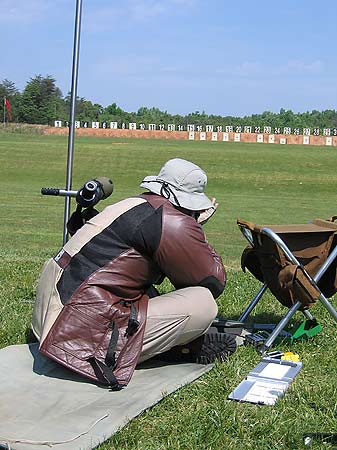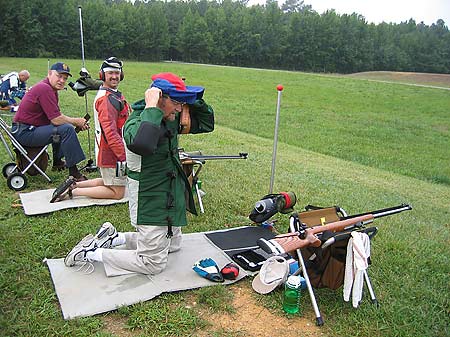nra high power competition
A typical full-length "across the course" NRA high power match is made up of four shooting stages.
- 20 shots in 20 minutes, offhand at 200 yards
- 10 shots in 60 seconds, standing to sitting or kneeling at 200 yards
- 10 shots in 70 seconds, standing to prone at 300 yards
- 10 shots in 10 minutes, prone at 600 yards
Many matches are shot in just about any permutation you can think of of the above four stages, and since not all shooting clubs have access to rifle ranges that allow shooting to 600 yards, matches comprising "reduced-range" courses of fire are very common. But, suffice it to say, a typical high power match has some combination of offhand, sitting and prone shooting in slow-fire and rapid-fire stages.
Shooters compete in skill classifications and rifle categories, so that a never-ever newbie in his first match won't be competing against the club's top dog. Likewise, a shooter competing with a World War II vintage M1 Garand won't be competing against one using a custom-made Remington 700 shooting the latest and greatest high performance cartridge. The skill classifications are broken down in to five demarcations:
- Marksman
- Sharpshooter
- Expert
- Master
- High Master
You might think that once you have a rifle and some ammo, you're set, as far as equipment goes ... Boy would you be wrong! The well-apointed high power competitor has a shooting jacket, glove, mat, stool, sling, spotting scope, scope stand, eye and ear protection, and many other little odds and ends that really add up quickly!
The picture below shows my friend, Mark Muskopf, in the sitting position for the 200-yard rapid-fire stage of a high power match.

The following image shows another friend, Dr. Bob Reynolds, preparing to get into position for the 600-yard slow-fire stage.

other links